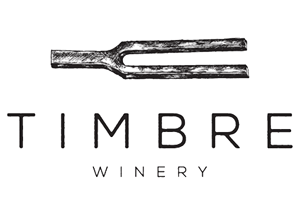Winemaking
Philosophy
We feel winemaking is a method of expressing terroir, and not just any terroir, but great terroir.
What is ter·roir (terˈwär/)?
The complete natural environment in which a particular wine is produced, including factors such as the soil, topography, and climate. It includes the characteristic taste and flavor imparted to a wine by the environment in which it is produced.
“To recognize great terroir, one needs to have experienced it in its many facets, and that is where my background as a sommelier gives me a leg up. Having tasted many of the world’s greatest wines, greatest vintages, and greatest winemakers, I have learned to read the intrinsic quality of a wine, and through that wine, the place from which it was born.“ – Joshua Klapper
The goal of our winemaking is to express a snapshot of a place (vineyard) and time (vintage) that will never occur again. That goal is achieved through enhancing and showcasing the terroir, not hiding it. We strive to produce wines of balance, which serves to convey not any one element – aroma, sweetness, acidity, alcohol, minerality, earth, complexity – but all of the elements in the wine in perfect harmony. To that end, the fruit is picked at a reasonable level of potential alcohol (nothing obscures terroir like over-ripeness of fruit), and is then handled gently in the winery using minimally invasive techniques. The wine is then given the time in barrel that it needs to become fully realized. No wine is bottled before its time!
Practice
Pinot Noir
Pinot Noir is certainly finicky. You must pay attention to Pinot Noir, but don’t try to poke and prod or you will have destroyed its essence. We believe the key is to start with fruit that has been grown to the highest standards from a place where the terroir’s beauty is evident. We typically destem the fruit into small fermenters, but sometimes, it is added as whole clusters. The wine is then punched down by hand, or gently pumped over until the fermentation is complete. We then collect the free run and press juice in barrel for a long, slow maturation until the wine is ready to be bottled.
Chardonnay
Chardonnay is whole cluster pressed in order to keep the harsh elements in the skins and seeds from adulterating the flesh of the grape. The juice is collected and settled before going into barrel where it will spend its entire life in the cellar, from fermentation to aging on the fine lees through to bottling. Chardonnay’s beauty lies in its aromatics and texture, and its ability to take in oxygen during the barrel aging and produce flavors like almonds, coconut, and passion fruit and the texture of silk to accompany the bright citrus qualities inherent in its grapes from the moment of picking.
Riesling
Riesling, like Pinot Noir, is a great expresser of terroir. Unlike Pinot Noir though, which likes to be handled very carefully so as not to upset its precarious balance, Riesling can be stripped down to its bare bones. We pick the fruit more for its high level of acidity as opposed to its sugar content. After whole cluster pressing, the juice is fined with a natural clay, which pulls out solids and leaves the juice perfectly clear. Then, the juice is chilled to 50 degrees to await the start of fermentation, which is slow and methodical (at around 55 degrees) taking from 4-8 weeks to complete. Once the sugar has balanced the acidity in the fruit, the wine is chilled all the way down to 30 degrees to stop fermentation, where it stays until it is ready to be bottled.
